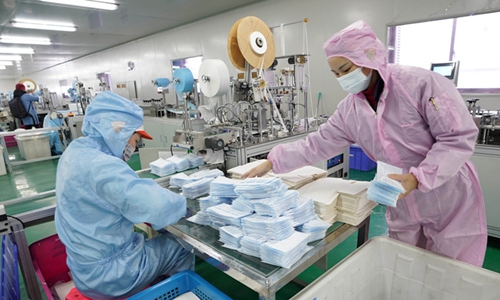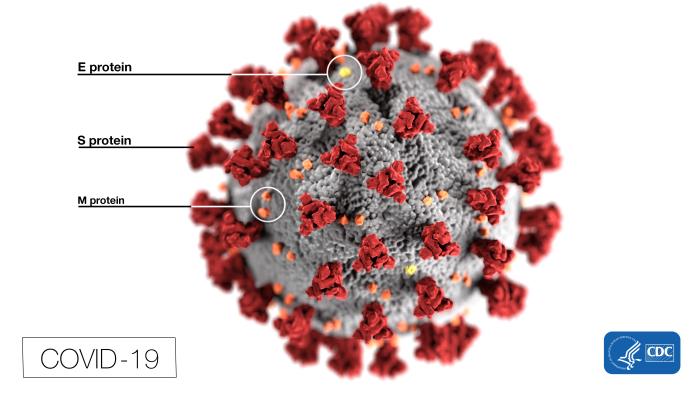Novartis announces further steps to protect and support its associates during the COVID-19 Pandemic
As the coronavirus (COVID-19) situation continues to evolve, our primary concern at Novartis remains the health and safety of our associates and patients globally. With that in mind, this week Novartis announced a range of additional measures to protect and support our associates around the world.
Announced this week, Novartis has extended its guidance for all Novartis associates within Europe, US and Canada to work from home until May 1, 2020, with the exception of those working in laboratories, manufacturing sites and in the field. We continue to assess the situation and adapt accordingly.
Novartis is also taking steps to support the health and wellbeing of our associates globally as they adapt to new working dynamics and family commitments as a result of the COVID-19 pandemic.
Given the nature of some of the work undertaken at Novartis, it is not possible for everyone to work remotely and Novartis has committed to provide childcare assistance for associates working in our laboratories, manufacturing sites and in the field throughout the course of the pandemic. In situations where it is not possible for an associate to work from home or this doesn’t allow them to perform their responsibilities as a caregiver, we’re also offering a global commitment of 12 days paid leave, in addition to vacation and personal time off.
In line with our commitment to learning, Novartis is also expanding the rich range of digital learning resources available to our associates through our collaboration with online learning platform, Coursera. Every Novartis associate now has access to two additional Coursera licenses per household to support family learning and homeschooling needs.
Novartis is also donating USD 1 Million to support the work of Khan Academy, a not-for-profit organization offering free virtual learning resources to students of all ages as well as tools and resources for parents and teachers. Our contribution will help support Khan Academy as they respond to the current heightened demand for virtual learning.
Further, to help our associates maintain their personal health and wellbeing, Novartis is providing access to Tignum X, an app providing digital wellness coaching in the areas of mindset, nutrition, movement and recovery to all our associates globally and as well as free access to their families.
Novartis remains responsive to any developments regarding coronavirus and we will continue to take necessary steps to protect and support our associates and patients as the situation evolves.
Novartis and life sciences companies commit expertise and assets to the fight against COVID-19 pandemic alongside Bill & Melinda Gates Foundation
- Collaboration to address product development and scale up challenges posed by current pandemic
Basel, March 26, 2020 - Today, Novartis and a consortium of life sciences companies announced an important collaboration to accelerate the development, manufacture and delivery of vaccines, diagnostics, and treatments for COVID-19 in response to the pandemic. The industry brings a range of assets, resources, and expertise needed to identify effective and scalable solutions to the pandemic that is affecting billions worldwide. Effects on health systems, economies, and livelihoods are significant, and effective response requires an unprecedented collaboration across government, academia, private sector, and philanthropy.
Read the full media released
Novartis commits to donate up to 130 million doses of hydroxychloroquine to support the global COVID-19 pandemic response
- Hydroxychloroquine and a related drug, chloroquine, are currently under evaluation in clinical trials for the treatment of COVID-19.
- Novartis Sandoz division will pursue appropriate regulatory authorizations and, upon approval, will work with stakeholders to determine how best to get this medicine to the patients who need it
- Commitment builds on recently announced USD 20 million Novartis COVID-19 Response Fund, drug discovery and development collaborations and essential medicines price stability
- Novartis encourages industry, governments and international institutions to work together to ensure adequate global access of medications to treat COVID-19 patients
Novartis announced today its commitment to donate up to 130 million doses of generic hydroxychloroquine to support the global COVID-19 pandemic response. Hydroxychloroquine and a related drug, chloroquine, are currently under evaluation in clinical trials for the treatment of COVID-19. Novartis is supporting ongoing clinical trial efforts, and will evaluate needs for additional clinical trials.
Read the full media release
Novartis announces broad range of initiatives to respond to COVID-19 Pandemic and creates USD 20 million global fund to support impacted communities
- Novartis COVID-19 Response Fund will provide grants of up to USD 1 million to support communities around the world most impacted by the coronavirus outbreak
- Novartis to join collaborative R&D efforts with the Bill & Melinda Gates Foundation, Wellcome, and Mastercard -supported COVID-19 Therapeutics Accelerator and a partnership with the Innovative Medicines Initiative (IMI)
- Commitments build on Sandoz pledge to maintain price stability of essential medicines and strong support of patients and healthcare systems
- Company continues to maintain strong focus on protecting employee health, ensuring supply of medicines for patients and smooth clinical trial operations
“We are dealing with an extraordinary and unprecedented public health crisis that requires an incredible level of involvement and collaboration across government, society and business. As a medicines company present in over 140 countries, we are stepping in to provide additional financial support to critical community or national programs that can help address urgent public health needs resulting from the COVID-19 pandemic. Recognizing the power of working together as an industry, we are also bringing the talent and capabilities of our industry-leading R&D organization to two leading and important collaborative R&D initiatives.” - Vas Narasimhan, CEO of Novartis
Basel, March 17, 2019 - Novartis today announced a broad set of measures to support the global response to the COVID-19 pandemic. These measures include the creation of a global fund to support communities around the world impacted by the COVID-19 pandemic as well as the company’s decision to join two key cross-industry R&D initiatives.
Read the full media release
We are dealing with an extraordinary public health crisis that’s hitting our communities in unprecedented ways and requires an incredible level of collaboration to tackle. @Novartis is taking more steps to help respond to the enormous challenge. @gatesfoundation
As the coronavirus (COVID-19) continues to spread globally, our primary concern at Novartis remains the health and safety of our associates and patients globally, and it is important that we protect them.
With that in mind, effective Monday, March 16 2020, all Novartis associates within Europe, US and Canada are requested to work from home, with the exception of those working in laboratories, manufacturing sites and in the field. This measure is valid for three weeks until April 3, 2020. We will continuously assess the situation and adapt accordingly.
Some governments around the world are providing local guidance that is stricter than this Novartis global guidance. In those cases, the local guidance takes precedence.
Given the nature of some of the work undertaken at Novartis, it is not possible for everyone to work remotely. By reducing the numbers of associates visiting our sites, we can protect those employees who cannot work offsite.
In addition to the measures above, Novartis has updated its general international travel restriction. All international business travel requires approval from an executive level manager, in alignment with local authorities.
Novartis remains responsive to any developments regarding coronavirus and will take all necessary steps to protect its associates and patients as the situation evolves.
As Novartis continues to closely monitor the coronavirus situation, our primary concern is the health and safety of our associates and patients globally. We will continue to deliver our medicines to patients around the world and we do not anticipate supply chain disruption at this time.
Novartis has also put the following measures in place:
- We are implementing general international travel restrictions
- We have issued guidance on how our associates can protect themselves against coronavirus infection
- Where required, we have enacted mitigation plans to ensure ongoing drug supply to depots for our clinical studies, and we are working closely with the authorities on dispensing to trial participants
In response to an urgent call for research and development on coronavirus, issued by the European Federation of Pharmaceutical Industries and Associations (EFPIA), Novartis has expressed its willingness to contribute to this important effort by making available a set of compounds from our libraries that we consider suitable for in vitro antiviral testing. In addition, we are evaluating our existing products to see if any could be repurposed beyond their approved indications.
Our generics business Sandoz has committed to keeping prices stable for a basket of essential medicines that may help in the treatment of coronavirus cases, specifically antivirals to reduce the impact of coronavirus and antibiotics to combat pneumonia. Read the Sandoz media release.
Novartis remains responsive to any developments regarding coronavirus and will take all necessary steps to protect its associates and patients as the situation evolves.



